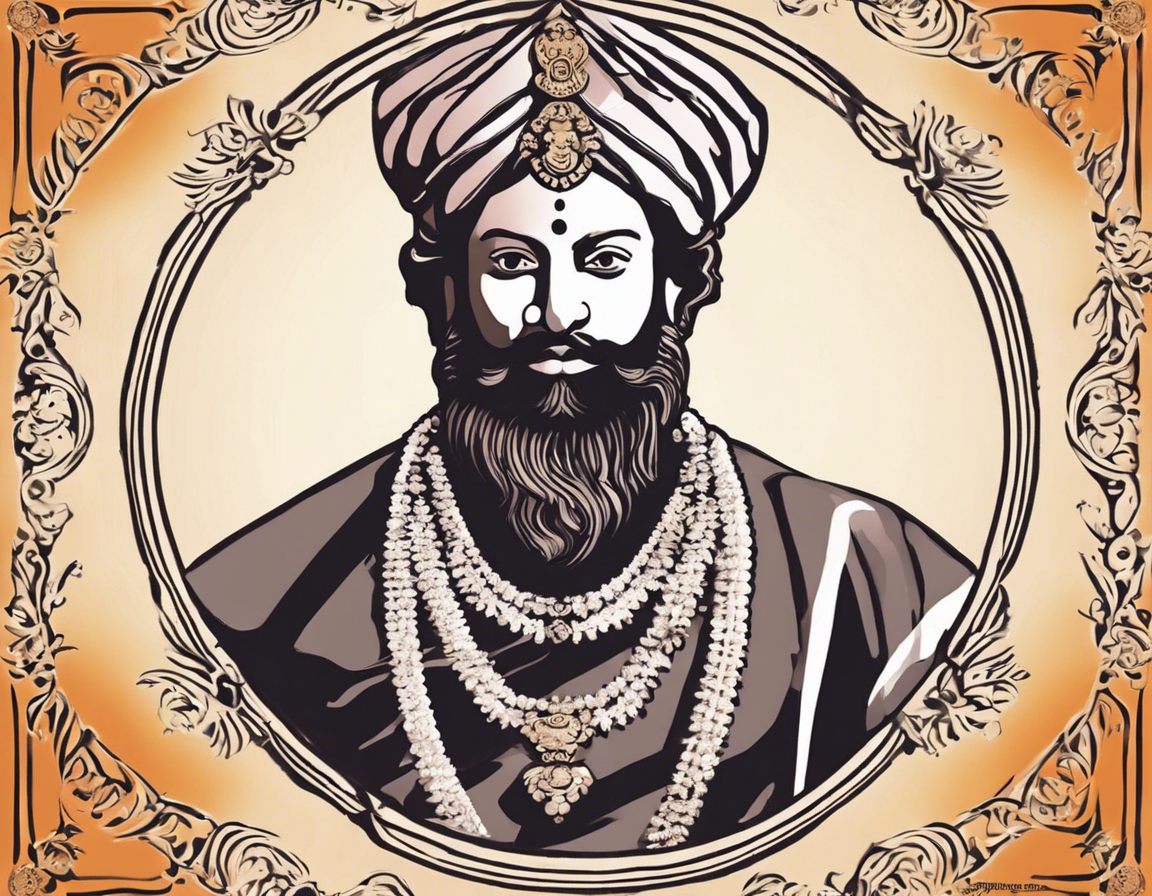The Coronation Ceremony of Chhatrapati Shivaji Maharaj marks a pivotal moment in Indian history, symbolizing the rise of the Maratha Empire in the 17th century. This grand event took place on June 6, 1674, in the Raigad Fort, Maharashtra, where Shivaji was crowned as the Chhatrapati, meaning the paramount sovereign. The ceremony was not just a coronation but a well-thought-out political and cultural spectacle that solidified Shivaji’s authority and showcased his vision of an independent Maratha Kingdom.
Background
Before delving into the intricacies of the coronation ceremony, it is essential to understand the context in which Shivaji Maharaj emerged as a prominent figure. Born in 1630 in the Shivneri Fort, Shivaji was a charismatic leader who challenged the oppressive rule of the Mughals and Bijapur Sultanate. His military acumen, administrative reforms, and commitment to Hindavi Swarajya (self-rule) resonated with the aspirations of the people in the Deccan region.
Preparation for the Coronation
The coronation ceremony was meticulously planned to not only assert Shivaji’s authority but also to send a message to his allies and adversaries alike. Weeks before the event, invitations were sent out to nobles, chieftains, and diplomats from various regions. Elaborate arrangements were made for accommodations, feasts, and entertainment to ensure the guests were treated with utmost respect and hospitality.
The Ceremony
On the day of the coronation, the Raigad Fort was adorned with colorful banners, flowers, and traditional decorations. Dignitaries and guests from different backgrounds gathered in the courtyard, creating a diverse yet harmonious atmosphere. Shivaji, dressed in royal attire, entered the venue amidst cheers and reverence from the crowd.
The ceremony began with prayers and rituals conducted by priests and scholars, invoking the blessings of the divine for Shivaji’s reign. The Palki Procession symbolizing the transfer of power from the supreme deity to the earthly ruler was a significant highlight of the event. As Shivaji sat on the throne, the Chhatrapati’s insignia including the crown, sword, and royal robes were presented to him, signifying his authority and responsibilities as the ruler.
Significance
The coronation of Shivaji Maharaj marked the culmination of his lifelong struggle for independence and sovereignty. It paved the way for the consolidation of the Maratha Empire and inspired future generations to uphold the values of courage, justice, and self-governance. The event also had profound implications on the geopolitics of India, challenging the hegemony of the Mughals and laying the foundation for a decentralized yet formidable Maratha confederacy.
Legacy
The legacy of Shivaji Maharaj’s coronation continues to resonate in modern India, symbolizing the power of resilience, leadership, and cultural pride. His vision of a united Hindu kingdom based on principles of equality and religious tolerance remains relevant in today’s diverse society. The Raigad Fort, where the coronation took place, stands as a monument to Shivaji’s legacy, attracting tourists and history enthusiasts from around the world.
Frequently Asked Questions (FAQs)
1. What led to Shivaji Maharaj’s decision to crown himself as Chhatrapati?
– Shivaji Maharaj’s decision to crown himself as Chhatrapati was a strategic move to assert his sovereignty and legitimacy as a ruler. It was a bold statement against the oppressive Mughal and Bijapur Sultanate rule in the region.
2. How did the coronation ceremony impact the Maratha Empire’s expansion?
– The coronation ceremony of Shivaji Maharaj boosted the morale of his followers and allies, leading to a period of unprecedented expansion and consolidation of the Maratha Empire. It also enhanced Shivaji’s diplomatic stature on the Indian subcontinent.
3. What were the key symbols of authority bestowed upon Shivaji during the coronation?
– The key symbols of authority bestowed upon Shivaji during the coronation included the royal crown, sword, and robes symbolizing his role as the Chhatrapati or paramount sovereign of the Maratha Empire.
4. How did Shivaji Maharaj’s coronation impact the religious landscape of the region?
– Shivaji Maharaj’s coronation symbolized a resurgence of Hindu identity and cultural pride in the face of foreign dominance. It emphasized the principles of religious tolerance and unity among different communities under the Maratha rule.
5. What architectural marvels or historical sites are associated with Shivaji Maharaj’s coronation?
– The Raigad Fort in Maharashtra, where Shivaji Maharaj was crowned as Chhatrapati, is a significant historical site associated with the coronation ceremony. The fort’s architecture and strategic location reflect the military prowess and administrative acumen of Shivaji.
In conclusion, the coronation ceremony of Chhatrapati Shivaji Maharaj remains a defining moment in Indian history, highlighting the ideals of valor, independence, and cultural revival. It serves as a reminder of the enduring legacy of a visionary leader who dared to challenge the status quo and shape the destiny of a nation.

